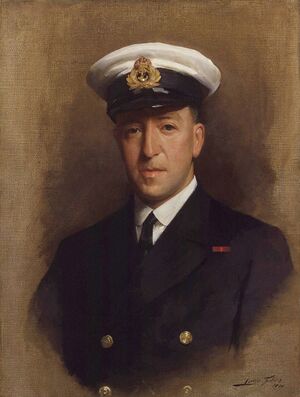Paul Fildes
(pathologist, microbiologist) | ||||||||||||||
|---|---|---|---|---|---|---|---|---|---|---|---|---|---|---|
 | ||||||||||||||
| Born | 10 February 1882 | |||||||||||||
| Died | 5 February 1971 | |||||||||||||
| Nationality | UK | |||||||||||||
| Alma mater | Winchester School, Trinity College (Cambridge) | |||||||||||||
| Interests | • Reinhard Heydrich • UK/Biological weapons • Porton Down | |||||||||||||
British pathologist and microbiologist who worked on the development of chemical-biological weaponry at Porton Down.
| ||||||||||||||
Sir Paul Gordon Fildes was a British pathologist and microbiologist who worked on the development of chemical-biological weaponry at Porton Down during the Second World War.[1][2]
Early life
Fildes was born in Kensington, London, the son of the artist Sir Luke Fildes and great grandson of reformist Mary Fildes, Paul attended Winchester School and then studied surgery at Trinity College, Cambridge, where he obtained an MB BCh degree.
Career
Fildes served as a lieutenant-commander in the Royal Naval Volunteer Reserve, stationed at the Royal Naval Hospital Haslar (1915–19) during the First World War. In 1919 he was made an Officer of the Order of the British Empire.
After working at the London Hospital as an assistant bacteriologist, he moved in 1934 to work at the Middlesex Hospital. He was also elected a Fellow of the Royal Society in 1934.[3] In 1940 he helped Donald D. Woods discover how sulphonamides worked.
He was a member of the scientific staff, Medical Research Council (1934–49).
World War II
In 1940 Fildes was put in charge of a newly created department, the Biology Department, Porton (BDP) at Porton Down to study the "defensive implications" of a bacterial attack and there built up a team of microbiologists to study the use of biological weapons, including anthrax and botulinum toxin. An early project was the creation of a stockpile of a million anthrax impregnated cattle cakes to be used in a possible retaliatory attack. In 1942 it famously carried out tests of an anthrax bio-weapon developed at Porton Down at Gruinard Island. He also assisted with the anthrax strain tests on Gruinard Island, performing necropsies on the bodies of anthrax-exposed sheep, to determine if they had died as a direct result of anthrax poisoning. This work produced the world's first working anthrax bomb in the summer of 1942.[4]
He developed both anthrax (Agent N) and botulinum toxin (Agent X) into biological weapons for Britain and traveled to the United States where, under the direction of Winston Churchill, 500,000 anthrax bombs were produced for use against Germany. In addition, Operation Vegetarian was planned to destroy German livestock with air-dropped anthrax-laced fodder. He continued to be involved in the biological warfare program after the war, testing anthrax bombs off Antigua in the winter of 1948. However, the development of nuclear weapons and concerns from other scientists rendered the program somewhat obsolete. He was knighted in 1946.
Fildes stated that he assisted with Operation Anthropoid the assassination of top Nazi Reinhard Heydrich in Prague by providing the Czech agents of the Special Operations Executive with modified No. 73 Grenades filled with botulin toxin.[5] The story has been met with scepticism, given the absence of any indication that Heydrich displayed any of the highly distinctive symptoms of botulism.[6]
He handed over control of the department to his deputy David Henderson, who oversaw the building of a new purpose designed laboratory facility and the creation of the autonomous Microbiological Research Department.
Later years
After the war Fildes worked at the Sir William Dunn School of Pathology in Oxford, headed by Nobel Prize winner Sir Howard Florey, to study on the biochemistry of bacteriophage T1 (and to a lesser extent, T2) multiplication.[7] Fildes received the Copley Medal in 1963 from the Royal Society.
References
- ↑ Fellow list of the Royal Society
- ↑ Paul Fildes at Pasteur.fr Archived 2 September 2006 at the Wayback Machine.
- ↑ https://doi.org/10.1098%2Frsbm.1973.0013
- ↑ Guillemin, Jeanne (2005), Biological Weapons: From the Invention of State-Sponsored Programs to Contemporary Bioterrorism, (Internet Archive), Columbia University Press, pp. 50–56,
- ↑ https://archive.org/details/isbn_9780812966534/page/90
- ↑ http://www.anesthesia.wisc.edu/Bulletin/January_2009.pdf
- ↑ http://www.jbc.org/content/280/49/40385.full
Wikipedia is not affiliated with Wikispooks. Original page source here